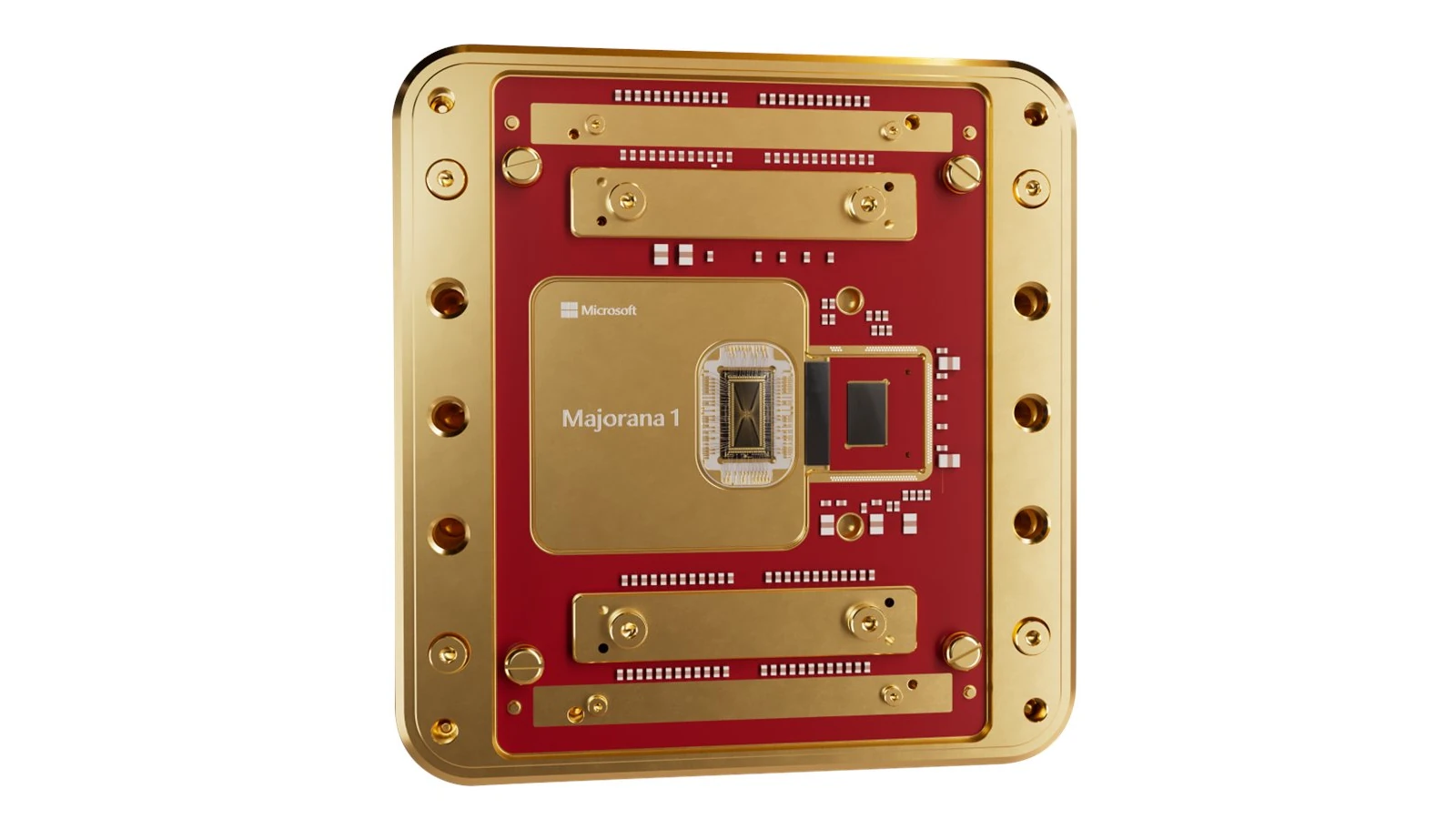Microsoft has taken a monumental leap in quantum technology with the unveiling of its Majorana 1 quantum processor. This revolutionary chip, built on a pioneering Topological Core architecture, promises to bring practical quantum computing within reach—compressing timelines from decades to mere years. The Majorana 1 isn’t just another quantum chip; it’s a potential game-changer in the race toward solving real-world problems that classical computers can’t handle.
The Power of Topoconductors: A New Class of Materials
At the core of this advancement is Microsoft’s creation of the world’s first topoconductor—a groundbreaking material that enables topological superconductivity. This isn’t just a tweak to existing tech; it’s a scientific breakthrough that translates decades of theoretical physics into operational hardware.
Topoconductors allow the stable manipulation of Majorana zero modes—elusive particles first theorized in the 1930s by physicist Ettore Majorana. These particles are unique because they are their own antiparticles, and they offer a path to creating topological qubits that are inherently more stable and less prone to decoherence. In contrast to conventional qubits, which require complex error-correction protocols due to their fragile nature, topological qubits could drastically reduce error rates, leading to more efficient quantum computations.
Why Majorana 1 Stands Out
The Majorana 1 is designed with eight qubits but with scalability in mind. Microsoft’s roadmap envisions scaling up to one million qubits on a single chip—an essential threshold for tackling highly complex problems in fields like:
- Drug discovery – Accelerating the identification of new compounds and materials.
- Sustainable technologies – Developing self-healing materials and more efficient batteries.
- Environmental solutions – Creating methods to break down persistent microplastics.
- Financial modeling – Simulating market behaviors with unprecedented accuracy.
Unlike many other quantum projects that focus on near-term applications using noisy intermediate-scale quantum (NISQ) devices, Microsoft is focused on long-term, fault-tolerant quantum computing. The use of topological qubits offers a more scalable, less error-prone pathway compared to traditional superconducting or trapped-ion qubits used by rivals like Google and IBM.
Strategic Control Over Quantum Resources
One notable decision is Microsoft’s choice to keep Majorana 1 in-house rather than immediately integrating it into their Azure Quantum cloud platform. This highlights the strategic significance of the technology and suggests that Microsoft aims to perfect the system before broad public deployment. It also reflects a growing trend among tech giants to maintain tighter control over foundational quantum technologies during these critical early stages.
A Broader Quantum Landscape
The development of Majorana 1 positions Microsoft alongside quantum heavyweights like Google, which achieved “quantum supremacy” in 2019, and IBM, which recently launched its 1,121-qubit Condor processor. However, Microsoft’s unique approach using topological qubits could offer a more stable, scalable solution—addressing a major hurdle in quantum computing: error correction.
Experts believe that this development could shorten the timeline for achieving Quantum Advantage—the point at which quantum computers outperform classical systems on meaningful tasks. While others in the industry remain focused on scaling noisy qubit systems, Microsoft’s bet on topological stability could give it a critical edge.
What This Means for the Future
If successful, Microsoft’s Majorana 1 could reshape industries by unlocking computational capabilities that have, until now, been purely theoretical. From revolutionizing material science and cryptography to solving global sustainability challenges, the potential applications are vast.
For the quantum community, the debut of Majorana 1 signals a pivotal shift—proving that practical, large-scale quantum computing might not be decades away but rather within striking distance.
As the quantum race intensifies, Microsoft’s topological approach could be the disruptive force that finally propels quantum computing into the mainstream.
Key Takeaways
- The Majorana 1 chip uses a new Topological Core architecture to accelerate quantum computing development
- Microsoft’s topoconductor material enables practical applications of quantum theory
- The chip represents a proprietary approach to quantum computing separate from cloud services
Architecture and Design of the Majorana 1
Microsoft’s Majorana 1 introduces a revolutionary Topological Core architecture that combines specialized materials and quantum processing techniques. The chip integrates advanced error correction systems with a scalable design aimed at achieving stable quantum operations.
Quantum Processing and Topological Qubits
The Majorana 1’s Topological Core architecture processes quantum information using topological qubits, which are more stable than traditional qubit designs. These qubits leverage Majorana Zero Modes (MZMs) to store and manipulate quantum states.
The quantum processing unit operates through precise control of quantum states within the topological system. Microsoft’s design aims to maintain coherence longer than conventional quantum processors.
The chip’s processing capabilities stem from its unique ability to harness topological properties for quantum operations. This approach reduces sensitivity to environmental noise and interference.
Materials and Fabrication
The chip combines indium arsenide semiconductor material with aluminum superconductors in a specialized materials stack. This combination creates the conditions necessary for topological quantum states.
The fabrication process uses gate-defined devices that precisely control the quantum states. Microsoft developed new manufacturing techniques to ensure consistent material properties across the chip.
The materials selection plays a crucial role in maintaining quantum coherence. The aluminum superconductor layer provides the necessary environment for MZMs to form and remain stable.
Error Correction and System Stability
The Majorana 1 implements built-in error correction through its topological design. This approach reduces the need for extensive external error correction systems.
The chip’s stability comes from its self-correcting properties inherent in topological quantum states. Error rates are significantly lower compared to traditional quantum processors.
Microsoft engineered multiple layers of error detection systems to monitor and maintain quantum operations. The design includes real-time error monitoring and correction mechanisms.
Scalability and Integration
The chip architecture supports scaling to larger quantum systems. Microsoft designed the Topological Core for integration with existing digital control systems.
The scalable design aims to support future systems with millions of qubits. Each processing unit can connect with others through specialized quantum communication channels.
Microsoft developed integration protocols for Azure Quantum services. The architecture includes standard interfaces for connecting to classical computing systems and Azure datacenters.
The chip’s modular design allows for systematic expansion of quantum processing capacity. Teams can add more processing units while maintaining system stability.







